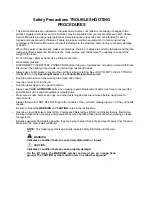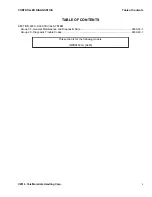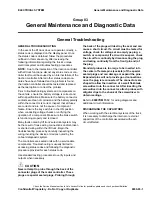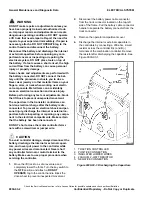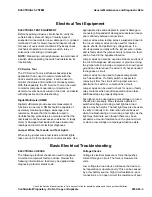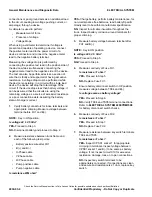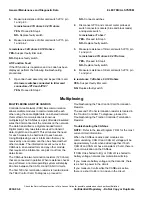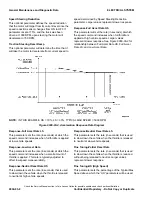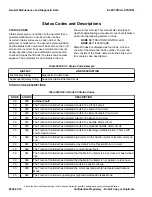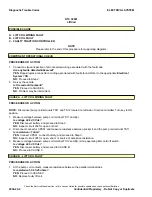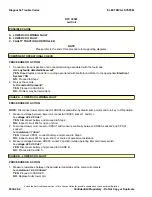
Amperage Checks
An ammeter is used to measure amperage or current
flow through a circuit. An ampere is the measurement
of electron flow, which can be used to measure the
amount of electrons that are flowing through a circuit.
Ohm’s Law states that current flow in a circuit is equal
to the circuit voltage divided by total circuit resistance,
known as the potential difference. Since amperage is
the current in the circuit, increasing voltage also
increases the current, or amperage levels.
Measuring amperage is always performed by placing
the ammeter in series with the device or circuit. This
will cause all current to flow through the protected
meter. The circuit must be operating in order to
measure amperage. Never measure amperage on
high amperage circuits or in parallel to a circuit, this
can result in the damage of the meter and the
electrical system.
Resistance Checks
The ohmmeter is used to measure a circuit or device's
resistance in ohms. Ohmmeters use low internal
voltage and current which flow through an isolated
circuit or device being tested. The voltage of the meter
battery and the amount of current flow in the circuit are
used to calculate the circuit’s resistance. It is
necessary to disconnect or isolate the circuit being test
so not to damage the vehicle’s electrical system or the
ohmmeter.
An ohmmeter is used to perform:
•
Resistance of a load device
•
Resistance of conductors
•
Value of resistors
•
Operation of variable resistors
•
CANbus termination resistors
•
Continuity
Contactor and Contactor Coil Checks
1.
Measure voltage between the coil's positive
terminal and B(-).
NOTE:
Key in ON position.
Is voltage same as truck's battery voltage?
YES-
NO-
Inspect the Coil's battery B(+) input circuit for
open or short.
2.
Disconnect coil's ground control circuit. Measure
resistance between ground circuit terminal and
B(-).
NOTE:
Actuate coil ground control to determine if
controller is sending activation signal to coil.
Is resistance <1 ohm?
YES-
NO-
Inspect ground control circuit. Verify that controller
is receiving device input signal.
3.
Measure battery voltage between main
contactor's battery B(+) terminal and B(-).
NOTE:
Key in ON position.
Is voltage same as truck's battery voltage?
YES-
Repair or replace faulty contactor.
NO-
Inspect main contactor battery cable for loose,
damaged, or corroded connections.
Lift and Lower Switch Check
1.
Operate lift/lower switch.
Does status code display if truck does not
respond to lift and lower command?
YES-
Proceed to status code description section
within this manual to address the status code.
NO-
Inspect lift and lower switches at tiller head.
Lower Function Fault
If the lower function is inoperative and no code has
been displayed, perform the following troubleshooting
procedures:
1.
Open tiller head assembly and inspect tiller card.
Are lower switches connected to tiller card
connectors JP12 and JP15?
YES-
NO-
Connect switches.
2.
Disconnect JP12 and connect meter probes at
switch connector sockets (blue and black leads)
and operate switch.
Is resistance <1 ohm?
YES-
NO-
Replace faulty switch.
ELECTRICAL SYSTEM
General Maintenance and Diagnostic Data
Check the Service Manual section in Yale Axcess Online for possible updates and check pertinent Bulletins
Confidential/Proprietary - Do Not Copy or Duplicate
9030-03-5
Summary of Contents for MPB045VG
Page 1: ...Maintenance CONTROLLER DIAGNOSTICS MPB045VG A245 PART NO 550095689 9000 YRM 1671 ...
Page 4: ......
Page 6: ......
Page 10: ...9030 4 ...
Page 24: ...NOTES 9030 03 14 ...
Page 83: ......
Page 84: ...9000 YRM 1671 10 19 9 15 1 15 12 14 10 14 4 14 ...


